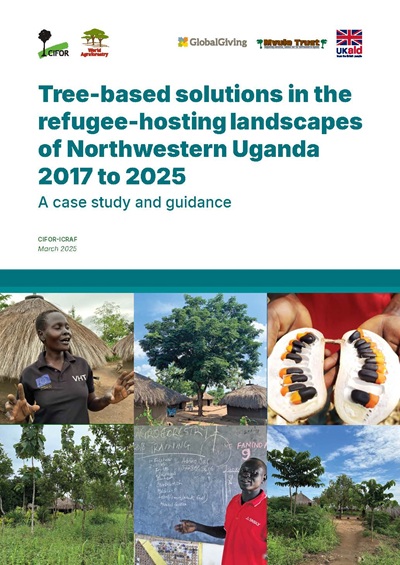But the seven-year project showed that, when given the choice of a well thought out assortment of trees, delivery of seedlings to near their homes, and training and support, refugees routinely planted 30-40 trees on their small plots, and sometimes as many as 60-70.
Refugees also planted multiple species – nine to 14 in one study -- and concentrated most of their trees, the fast-growing pole and timber species, along plot boundaries. Within their plots, they grew fruit trees. Less expected, they grew indigenous trees, including threatened species such as mvule (Milicia excelsa), and retained mature native trees.
“The notion is that refugees will clear everything. But we see on the plots that two to four of the original trees are still standing. They value them for their various products and services,” said ICRAF’s Dr Phosiso Sola, who led the project.
Refugees appreciated trees for acting as windbreaks, “attracting rain”, providing fruit and income, and reducing conflict with local inhabitants caused by competition for firewood. An uptake study found 29% of refugees harvesting firewood from their planted trees. Nationals in the project planted hundreds of trees in woodlots.
With mitigating the impacts of climate change and environmental degradation and supporting resilience now imperative to the mandate of humanitarian actors, this report is encouraging and essential reading.
Année de publication
2025
Auteurs
Langue
English
Mots clés
trees, refugees, food security, landscape, tree planting, natural resources management
Géographique
Uganda
















